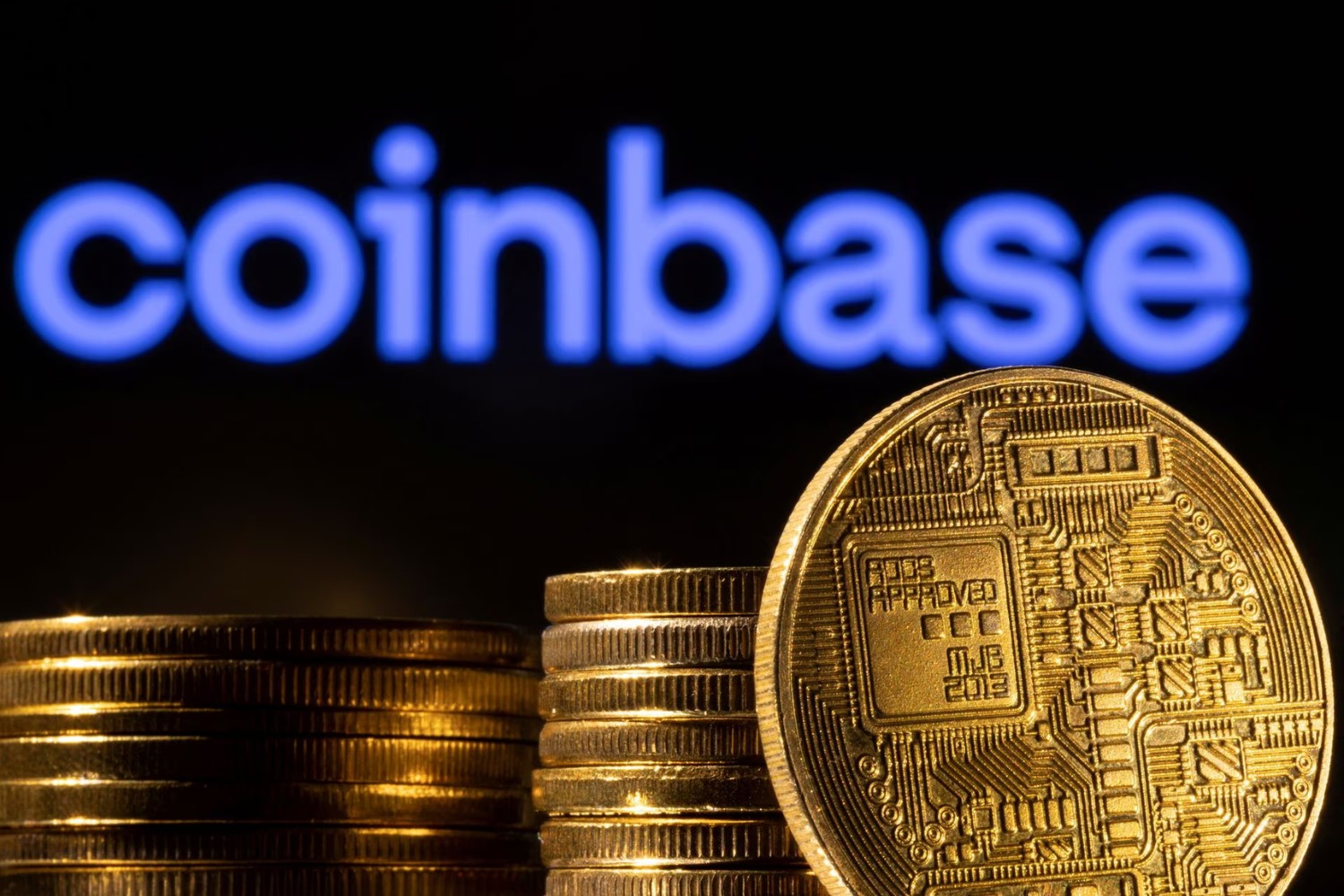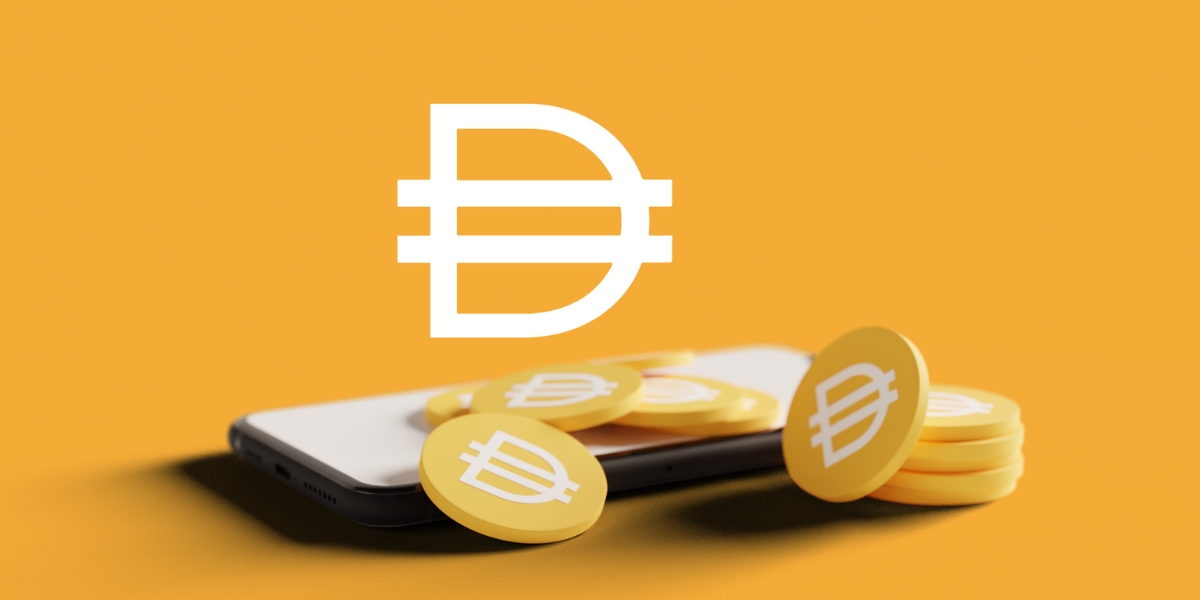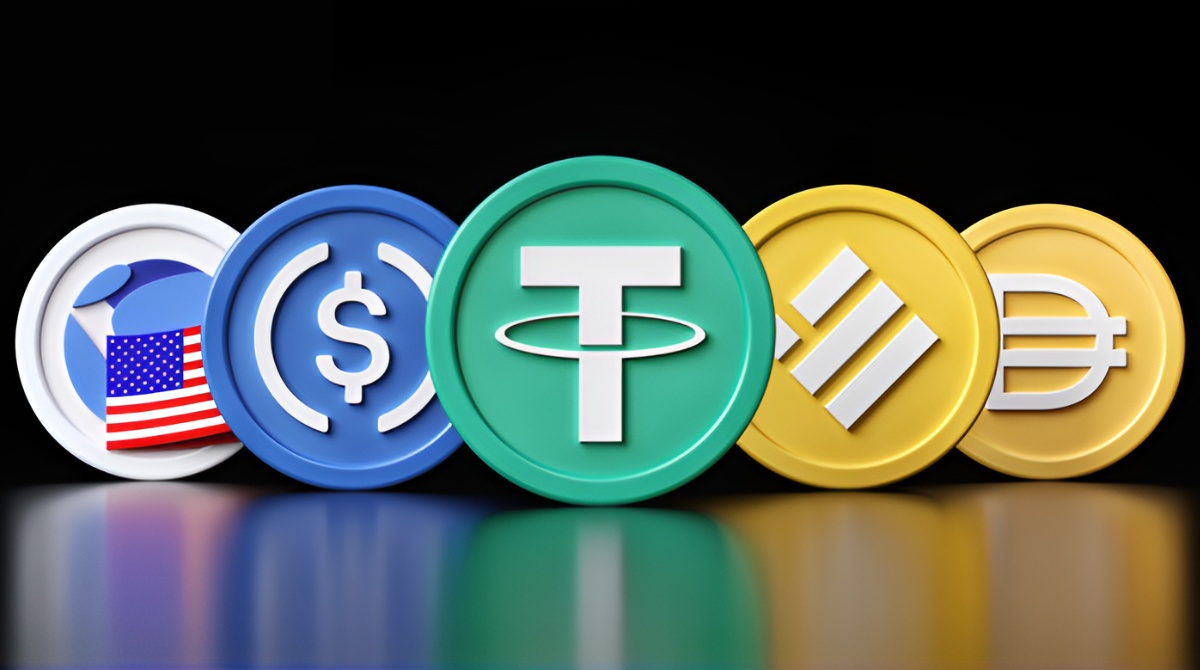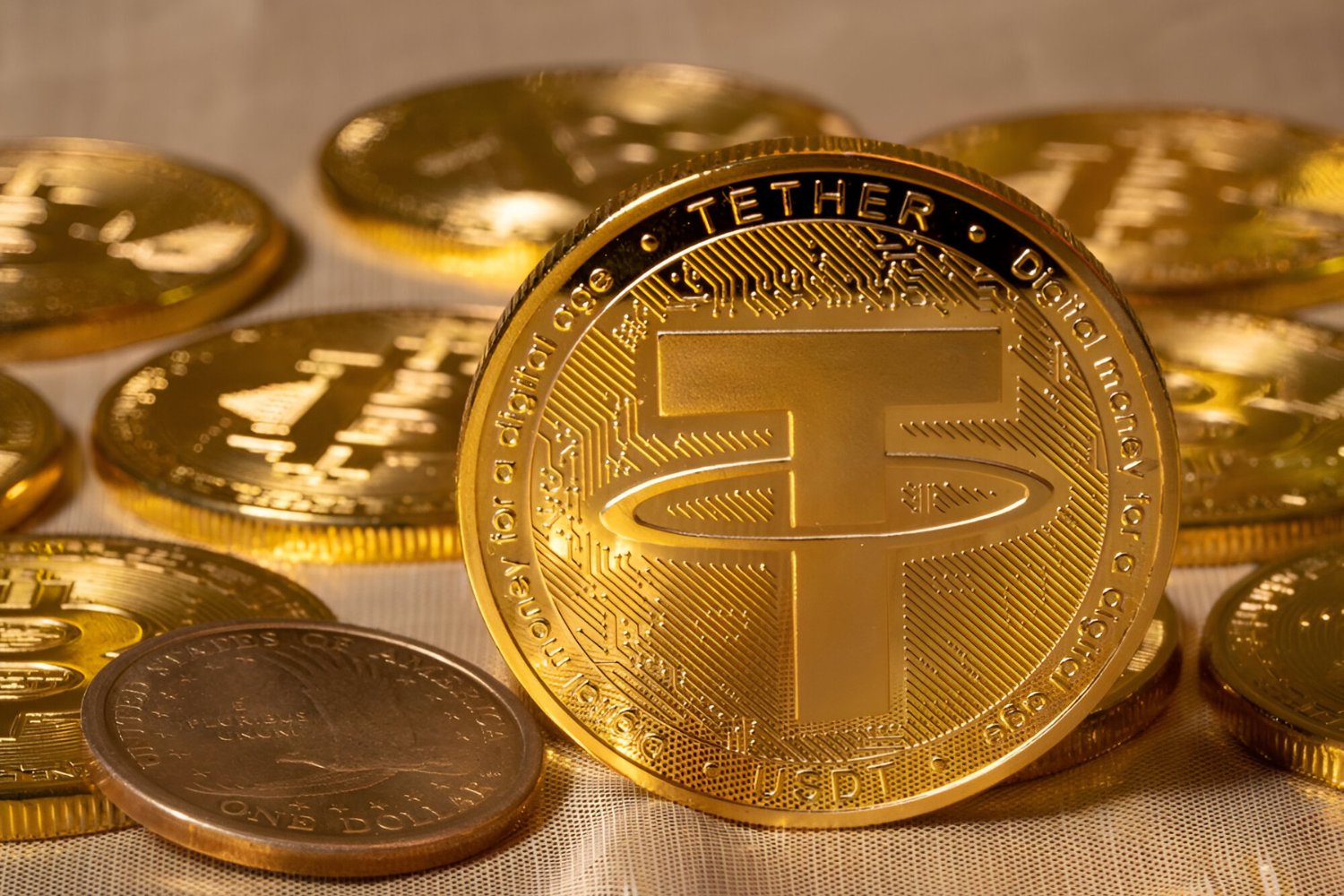Introduction
Stablecoins have rapidly gained popularity in the world of cryptocurrency. Designed to address the price volatility that is inherent in many cryptocurrencies, stablecoins offer a more stable and predictable value, making them an attractive option for users and investors alike. But what exactly is a stablecoin and why create one?
A stablecoin is a type of cryptocurrency that aims to maintain a stable value relative to a specific asset or a basket of assets. Unlike other cryptocurrencies like Bitcoin or Ethereum, which can experience significant price fluctuations, stablecoins provide stability by pegging their value to a more stable asset, such as fiat currencies like the US dollar or gold.
The main purpose of creating a stablecoin is to provide the benefits of cryptocurrency, such as decentralized transactions and borderless transfers, while minimizing the volatility that can deter users and hinder its use as a medium of exchange. By offering price stability, stablecoins enable users to confidently store, transfer, and use them as a reliable form of digital currency.
Stablecoins also serve as a bridge between the world of traditional finance and digital assets, as they provide a familiar and stable value that traditional investors and institutions are more comfortable with. This can potentially lead to increased adoption of cryptocurrencies and further integration of digital assets into the mainstream financial system.
With the growing interest in stablecoins, various types have emerged, each with its unique approach to maintaining price stability. Some stablecoins are backed by physical assets, while others rely on algorithmic or collateralized mechanisms. Understanding the different types of stablecoins and their underlying stability mechanisms is crucial for anyone looking to create their own stablecoin.
In this article, we will explore the types of stablecoins, what determines their stability, and the building blocks involved in creating a stablecoin. We will also outline a step-by-step guide on how to create a stablecoin, from defining your objectives to implementing smart contracts and launching the stablecoin to the market. Whether you are a cryptocurrency enthusiast or an entrepreneur looking to enter the world of stablecoins, this article will provide you with the essential knowledge to embark on this exciting journey.
What is a Stablecoin?
A stablecoin is a type of cryptocurrency that is designed to maintain a stable value, usually pegged to a specific asset or a basket of assets. Unlike traditional cryptocurrencies such as Bitcoin or Ethereum, which experience significant price volatility, stablecoins aim to offer a more predictable and steady value.
The value stability of a stablecoin is achieved through various mechanisms, which we will discuss in more detail later in this article. These stability mechanisms ensure that the price of a stablecoin remains relatively stable over time, making it more suitable for everyday transactions and reducing the risk of value erosion.
One of the most common approaches to achieving stability in a stablecoin is pegging its value to a fiat currency, such as the US dollar. This means that for every unit of the stablecoin issued, there is an equivalent value in the fiat currency held in reserve. This ensures that the stablecoin can be redeemed for the equivalent fiat currency at any time, providing confidence and stability for users.
Another popular method used by stablecoins is collateralization. In this approach, the stablecoin is backed by a reserve of assets such as other cryptocurrencies, precious metals, or even real-world assets. By maintaining a collateral reserve that exceeds the total value of the stablecoin in circulation, stability and value preservation can be achieved.
Stablecoins can be used for various purposes. They provide a more stable medium of exchange, enabling users to transact without worrying about sudden price fluctuations that are common in non-stable cryptocurrencies. Additionally, stablecoins can serve as a store of value, allowing users to preserve their wealth in a more predictable manner.
Moreover, stablecoins can facilitate cross-border transactions and remittances with greater ease and cost-effectiveness. Traditional money transfers often involve high fees and lengthy processing times, while stablecoins offer almost instant and low-cost transactions, making them an attractive option for global commerce.
By combining the benefits of cryptocurrencies, such as transparency, security, and immutability, with the stability of traditional fiat currencies, stablecoins aim to bridge the gap between traditional finance and the world of digital assets. They offer a reliable and familiar value proposition for users, making them a promising tool for mainstream adoption and integration of cryptocurrencies into everyday life.
Why Create a Stablecoin?
The creation of stablecoins serves several important purposes in the cryptocurrency industry. Let’s explore some of the key reasons why individuals and organizations choose to create their own stablecoin.
1. Price Stability: One of the primary motivations behind creating a stablecoin is to offer users a cryptocurrency with a stable value. The highly volatile nature of traditional cryptocurrencies like Bitcoin can make them impractical for everyday transactions and hinder their adoption. Stablecoins, on the other hand, provide a more predictable value, making them suitable for use as a medium of exchange.
2. Reduced Risk and Increased Trust: Stablecoins are designed to minimize the risk of value erosion associated with other cryptocurrencies. By pegging the value of a stablecoin to a stable asset or using mechanisms like collateralization, stablecoins can provide users with increased confidence and trust. This stability makes them a more reliable store of value, appealing to individuals who want to preserve their wealth without the risk of significant price fluctuations.
3. Global Accessibility: Stablecoins offer a borderless digital currency that can be easily accessed and used by people around the world. By leveraging blockchain technology, stablecoins enable instant and low-cost transactions without the need for intermediaries like banks. This makes them an attractive option for individuals and businesses seeking a fast, secure, and cost-effective means of conducting cross-border transactions.
4. Financial Inclusion: Stablecoins have the potential to promote financial inclusion by providing access to digital financial services for the unbanked and underbanked populations. In areas where traditional banking infrastructure is lacking, stablecoins can serve as a gateway to financial services, allowing individuals to store, transfer, and transact with digital assets more easily.
5. Integration with Traditional Finance: Stablecoins offer a bridge between the traditional financial system and cryptocurrencies. With their stable value, stablecoins can be more easily integrated into existing financial infrastructure, enabling individuals and institutions to engage with digital assets without exposing themselves to the volatility of traditional cryptocurrencies. This integration can pave the way for greater acceptance and adoption of cryptocurrencies within mainstream finance.
6. Tokenization of Assets: Stablecoins can facilitate the tokenization of real-world assets such as commodities, real estate, or securities. By representing these assets digitally on blockchain platforms through stablecoins, ownership and transfer can be made more efficient, transparent, and accessible. This opens up new opportunities for fractional ownership, liquidity, and asset management.
In summary, creating a stablecoin offers the benefits of stability, reduced risk, global accessibility, financial inclusion, integration with traditional finance, and the potential for asset tokenization. By addressing the price volatility of traditional cryptocurrencies, stablecoins aim to provide a more reliable and versatile tool for transactions, wealth preservation, and financial innovation.
Types of Stablecoins
Stablecoins come in various forms, each employing different mechanisms to maintain their price stability. Let’s explore the main types of stablecoins:
- Fiat-Collateralized Stablecoins: These stablecoins are backed by a reserve of fiat currency, such as the US dollar. For each unit of stablecoin in circulation, there is an equivalent amount of the fiat currency held in a bank account or other secure custodian. The value stability is achieved by ensuring the 1:1 backing of the stablecoin with the underlying fiat currency.
- Crypto-Collateralized Stablecoins: Cryptocurrencies like Bitcoin or Ethereum back these stablecoins. To ensure stability, the stablecoin’s value is maintained by having a reserve of other cryptocurrencies, which are held in a smart contract as collateral. The collateral reserve is often over-collateralized, meaning it exceeds the total value of stablecoins in circulation to mitigate price fluctuations.
- Algorithmic Stablecoins: These stablecoins use algorithmic mechanisms to regulate their supply and demand in order to stabilize their value. The algorithmic model often involves expanding or contracting the stablecoin’s supply in response to changes in demand, using factors like price or market conditions. By algorithmically adjusting the supply, these stablecoins aim to maintain a stable value without relying on collateral.
- Commodity-Backed Stablecoins: These stablecoins are pegged to the value of physical commodities such as gold, silver, or oil. Each unit of stablecoin represents ownership or entitlement to a specific quantity of the underlying commodity, which is held in reserve. This type of stablecoin provides stability by aligning its value with the market price of the associated commodity.
- Hybrid Stablecoins: Hybrid stablecoins combine multiple stabilization mechanisms. They might use a combination of collateralization with fiat currency or cryptocurrencies, algorithmic adjustments, or commodity backing. The goal is to leverage the strengths of different stabilization methods to achieve a stable value efficiently.
Each type of stablecoin has its own advantages and challenges. Fiat-backed stablecoins offer the reassurance of a known asset, while crypto-backed stablecoins benefit from the transparency and decentralized nature of blockchain technology. Algorithmic stablecoins provide stability without the need for collateral, and commodity-backed stablecoins leverage the intrinsic value of physical assets.
The choice of stablecoin type depends on various factors such as the desired level of stability, collateral availability, regulatory considerations, and the specific use case. It’s important to carefully evaluate the pros and cons of each type before deciding on the most suitable stablecoin model for your project.
What Determines the Stability of a Stablecoin?
The stability of a stablecoin is determined by several factors and mechanisms put in place to maintain its value. Understanding these factors is crucial for assessing the reliability and effectiveness of a stablecoin. Here are the key elements that contribute to the stability of a stablecoin:
- Collateralization: For stablecoins that are backed by assets, the collateralization ratio plays a critical role in maintaining stability. It refers to the relationship between the value of the underlying assets held as collateral and the total value of the stablecoin in circulation. A higher collateralization ratio provides greater confidence in the stability of the stablecoin, as it offers a buffer against potential price declines.
- Market Demand and Supply: The demand and supply dynamics of a stablecoin can influence its stability. If the demand for a stablecoin exceeds its supply, its value may increase above the pegged price. Conversely, if the supply exceeds the demand, the stablecoin’s value may depreciate. Stablecoins employ various mechanisms to manage these fluctuations, such as algorithmic adjustments to the supply or market-making activities to balance demand and supply.
- Transparency and Auditability: Transparency is crucial for maintaining stability and building trust in a stablecoin. Stablecoin projects often employ independent audits to verify the collateralization and reserve holdings, ensuring that the claimed value is accurately maintained. Regular audits and transparent reporting help reassure users that the stablecoin is backed as claimed, enhancing stability and credibility.
- Regulatory Compliance: Compliance with regulatory frameworks is vital for the stability of a stablecoin. Regulatory oversight and adherence to legal and financial regulations help establish trust and ensure that the stablecoin operates in a secure and compliant manner. Regulatory compliance can also contribute to wider adoption of the stablecoin by institutional investors and traditional financial institutions.
- Smart Contract Security: Stablecoins built on blockchain platforms often rely on smart contracts to govern their operations. The security and reliability of these smart contracts are essential for the stability of the stablecoin. Weaknesses or vulnerabilities in the smart contract code can expose the stablecoin to potential attacks or manipulation, leading to instability and loss of user confidence.
- Market Liquidity: Adequate market liquidity is crucial for maintaining stability in a stablecoin. Sufficient liquidity enables users to buy or sell stablecoins without significantly impacting their value. Insufficient liquidity can lead to wider spreads, price slippage, and potential price manipulation, which can undermine the stability and usability of the stablecoin.
It’s important to note that stability is not necessarily a permanent state for any stablecoin. External market forces, changing economic conditions, or events that affect the underlying assets can impact stability. Continuous monitoring, risk management, and adaptability to changing market dynamics are essential for maintaining stability over the long term.
By carefully considering and addressing these factors, stablecoin creators can improve the stability and reliability of their stablecoin, ensuring a more trustworthy and predictable digital currency.
Building Blocks of a Stablecoin
Creating a stablecoin involves several key components that form the building blocks of its design and operation. Understanding these building blocks is essential for establishing a stable and functioning stablecoin. Let’s explore the foundational elements:
- Objective and Use Case: Defining the objectives and use case of the stablecoin is the first step in its creation. This involves identifying the target audience, understanding the intended purpose of the stablecoin, and determining the specific problem it aims to solve. Whether it is facilitating cross-border payments, acting as a medium of exchange, or enabling asset tokenization, clarifying the objective and use case guides the design and implementation processes.
- Underlying Asset: Selecting the underlying asset that will provide stability to the stablecoin is a critical decision. The most common options include fiat currencies, cryptocurrencies, commodities, or a combination of assets. The choice depends on factors such as liquidity, stability, regulatory considerations, and the desired level of decentralization. The underlying asset should have a proven track record and be easily redeemable or tradable to ensure the stablecoin’s value stability.
- Stability Mechanisms: Implementing stability mechanisms is crucial for maintaining the pegged value of the stablecoin. The specific mechanisms depend on the type of stablecoin being created. For fiat-collateralized stablecoins, maintaining a sufficient reserve of the underlying asset is essential. Algorithmic stablecoins rely on smart algorithms to adjust supply based on demand fluctuations. Collateralized stablecoins require mechanisms to manage the collateral, ensuring stability and solvency.
- Smart Contracts: Leveraging smart contracts is common in many stablecoin designs. These programmable contracts facilitate the automation of processes, such as issuance, redemption, and stability management. Smart contracts enable transparency, immutability, and enforceability of the stablecoin’s rules, ensuring that the stablecoin operates as intended. Thorough auditing and testing of the smart contract code are necessary to mitigate vulnerabilities or security risks.
- Liquidity Providers: Ensuring adequate liquidity is vital for the stablecoin’s operations. Liquidity providers, such as market makers or liquidity pools, play a crucial role in maintaining a balanced market for the stablecoin. Their participation ensures sufficient buy and sell orders, reducing volatility and enabling smooth price stability. Building relationships with reputable liquidity providers and implementing market-making strategies contribute to overall stability.
- Community and Governance: Creating a stablecoin involves building a community around it. Establishing a governance model that enables user participation, decision-making, and transparency is essential. This allows stablecoin holders to have a say in its future development, ensuring the stability of the stablecoin’s ecosystem and alignment with the community’s goals and expectations.
By carefully considering and implementing these building blocks, stablecoin creators can develop a robust framework for their stablecoin, ensuring stability, functionality, and the ability to adapt to changing market conditions.
How to Create a Stablecoin
Creating a stablecoin involves a systematic process that requires careful planning, implementation, and continuous monitoring. Here is a step-by-step guide on how to create a stablecoin:
Step 1: Define the Objectives: Clearly identify the purpose and objectives of your stablecoin. Determine the target market, use case, and the problem you aim to solve. Have a clear vision of what you want to achieve with your stablecoin, whether it’s providing stability for everyday transactions, facilitating cross-border payments, or enabling asset tokenization.
Step 2: Choose the Underlying Asset: Decide on the underlying asset or assets that will provide stability to your stablecoin. This can be a fiat currency, a basket of assets, a cryptocurrency, or even a physical commodity. Consider factors such as liquidity, stability, regulatory compliance, and the intended level of decentralization when selecting the underlying asset.
Step 3: Design the Stability Mechanisms: Determine the stability mechanisms you will employ to maintain the pegged value of your stablecoin. This can involve collateralization with the chosen asset, using algorithms to adjust supply based on demand, or a combination of mechanisms. Carefully design and implement these stability mechanisms to ensure the stablecoin’s stability over time.
Step 4: Implement Smart Contracts: Leverage smart contract technology, such as Ethereum’s solidity, to create the necessary contracts to govern the operations of your stablecoin. Develop smart contracts for issuance, redemption, stability management, and any other functionalities required. Thoroughly test and audit the smart contracts to ensure their security, efficiency, and alignment with the stablecoin’s objectives.
Step 5: Launch and Distribution: Prepare for the launch and distribution of your stablecoin. Determine the initial distribution strategy and consider factors like token supply, token allocation, and distribution methods. Establish partnerships with reputable liquidity providers to ensure sufficient market liquidity. Implement a marketing and communication plan to generate awareness and adoption of your stablecoin.
Note: Throughout the process, it’s crucial to consider legal and regulatory requirements. Engage legal counsel to ensure compliance with applicable laws, regulations, and licensing requirements in the jurisdictions you plan to operate.
Creating a stablecoin requires careful consideration of the objectives, design, stability mechanisms, and implementation. It’s important to continuously monitor and adapt to changing market conditions and user feedback to maintain the stability and relevance of your stablecoin.
Step 1: Define the Objectives
The first step in creating a stablecoin is to clearly define your objectives. This involves determining the purpose, target market, and use case of your stablecoin. Defining the objectives is crucial as it sets the foundation for the entire project and guides the decision-making process throughout the development stages.
Identify the Purpose: Begin by understanding the specific problem you aim to solve with your stablecoin. This could include providing stability for everyday transactions, offering a reliable store of value, facilitating cross-border payments, or enabling asset tokenization. Defining the purpose of your stablecoin helps you determine its unique value proposition and sets it apart from other cryptocurrencies.
Understand the Target Market: Consider the target market for your stablecoin and the users you want to attract. Determine whether you are targeting individual users, businesses, or specific industries. Understanding the needs, preferences, and pain points of your target market allows you to tailor the stablecoin’s features and functionalities to best serve their requirements.
Specify the Use Case: Clearly identify the specific use case for your stablecoin. Determine how it will be utilized, whether as a medium of exchange, a means for remittances, a tool for financial inclusion, or an asset representation. Defining the use case helps you shape the stablecoin’s technical design, stability mechanisms, and marketing strategies.
Consider the Competitive Landscape: Analyze the existing competition in the stablecoin market. Determine what sets your stablecoin apart and how it offers a unique value proposition compared to other stablecoins or traditional financial solutions. Understanding the competitive landscape allows you to identify potential differentiators and areas where your stablecoin can excel.
Set Realistic Goals: Establish clear and achievable goals for your stablecoin project. These goals can range from market adoption and user acquisition targets to stability metrics and regulatory compliance milestones. Setting realistic goals helps you measure the success of your stablecoin and identify areas for improvement along the way.
By defining the objectives of your stablecoin, you establish a clear direction and purpose for the project. This ensures that the development, implementation, and marketing efforts align with your vision and serve the needs of your target market. Continually revisit and refine your objectives as the stablecoin evolves to adapt to changing market conditions and user feedback.
Step 2: Choose the Underlying Asset
In creating a stablecoin, one of the crucial decisions to make is selecting the underlying asset or assets that will provide stability to your digital currency. The choice of underlying asset will determine the stability, credibility, and overall functionality of your stablecoin. Follow these guidelines to choose the most suitable underlying asset for your stablecoin:
Evaluate Stability: Assess the stability of potential underlying assets. Stability is essential to ensure that the value of your stablecoin remains pegged to the chosen asset. Consider assets with a history of low volatility and a predictable value. Typically, fiat currencies like the US dollar or a basket of major currencies are preferred for stability.
Liquidity: Consider the liquidity of the underlying asset. Liquidity refers to the ease with which an asset can be bought or sold without significantly affecting its price. Opt for assets that are highly liquid as it ensures there is always sufficient market depth to accommodate the trading volumes of your stablecoin.
Regulatory Compliance: Compliance with regulatory standards is crucial for ensuring a stablecoin’s longevity and acceptance. Evaluate the regulatory landscape and ascertain whether the chosen underlying asset complies with relevant laws and regulations in the jurisdictions you plan to operate in. Avoid assets that may present legal or regulatory challenges.
Redeemability: Consider the redeemability of the chosen asset. Users should have confidence that they can exchange their stablecoins for the underlying asset at any time. Ensure that mechanisms are in place to facilitate both issuance and redemption of the stablecoin, guaranteeing that it maintains its stability.
Collateralization: If your stablecoin is to be collateralized, carefully assess the collateral options available for the underlying asset. Consider the market value, liquidity, and custody solutions for potential collateral assets. Maintain a prudent collateralization ratio to mitigate risks and provide stability to the stablecoin.
Decentralization: Consider the level of decentralization desired for your stablecoin. Some stablecoins leverage a decentralized network and decentralization-friendly assets, such as cryptocurrencies, to ensure transparency and reduce reliance on centralized entities. Evaluate the trade-offs between centralization and decentralization in terms of stability, security, and regulatory considerations.
Community Acceptance: Analyze the community acceptance and perception of the chosen underlying asset. Consider assets that have a broad acceptance and are recognized as store-of-value assets. A widely accepted underlying asset provides assurance to users and can foster adoption by individuals and institutions.
By carefully evaluating these factors, you can choose an underlying asset that aligns with the stability, liquidity, regulatory compliance, and other requirements of your stablecoin. Remember that the choice of the underlying asset is paramount and will significantly impact the stability and success of your stablecoin project.
Step 3: Design the Stability Mechanisms
Designing effective stability mechanisms is a critical step in creating a successful stablecoin. These mechanisms ensure that the value of your stablecoin remains stable and reliably pegged to the chosen underlying asset. Follow these considerations to design robust stability mechanisms:
Select the Stability Model: Choose the appropriate stability model based on the type of stablecoin you are creating. Consider options such as fiat-collateralization, crypto-collateralization, algorithmic adjustment, or a hybrid approach. Each model has its strengths and considerations, so select the model that best fits your stablecoin’s objectives and use case.
Collateralization Ratio: If you decide to collateralize your stablecoin, determine the collateralization ratio. This ratio represents the relationship between the value of the underlying assets and the total supply of stablecoins. Maintaining an adequately collateralized stablecoin ensures stability and trust. Avoid over-collateralization, as it can tie up excessive capital, but ensure sufficient collateral to mitigate risks.
Stability Feedback Mechanisms: Implement feedback mechanisms that respond to market dynamics to maintain stability. For example, in an algorithmic stablecoin, the supply can be adjusted based on the demand. Determine the factors that influence supply and demand, such as price deviations or market conditions, and design algorithms that autonomously adjust the stablecoin’s supply accordingly.
External Market Monitoring: Continuously monitor external market conditions and adapt stability mechanisms accordingly. Keep track of factors that can impact stability, including regulatory changes, global economic events, or fluctuations in the value of the underlying asset. Incorporate mechanisms that respond to these external factors and ensure stability over time.
Governance and Risk Management: Implement governance mechanisms to manage risks and maintain stability. Foster a transparent and participatory governance structure that enables stablecoin holders to have a say in decision-making processes. Allow for upgrades, adjustments, and risk management protocols to be implemented by the governance system, ensuring adaptability and long-term stability.
Auditing and Transparency: Regularly audit the stability mechanisms and maintain transparency with stakeholders. Conduct independent audits of your stablecoin’s operations, including reserves, collateral, and stability mechanisms, to provide assurance and build trust. Keep stakeholders informed through transparent reporting, allowing them to verify stability and collateralization on an ongoing basis.
Testing and Iteration: Thoroughly test the stability mechanisms before launching your stablecoin. Simulate various scenarios and stress-test the stability mechanisms to identify weaknesses or potential vulnerabilities. Implement a robust testing and iteration process to refine and improve the stability mechanisms based on real-world feedback.
By considering these factors and designing robust stability mechanisms, you can ensure that your stablecoin maintains its intended peg and provides users with the stability they expect. Regularly review and refine the stability mechanisms to adapt to changing market conditions and improve the long-term stability of your stablecoin.
Step 4: Implement Smart Contracts
Implementing smart contracts is a vital part of creating a stablecoin. Smart contracts are self-executing contracts with predefined rules and conditions that govern the operations of your stablecoin. Follow these steps to effectively implement smart contracts for your stablecoin:
Choose a Suitable Blockchain: Select a suitable blockchain platform for deploying your smart contracts. Consider factors such as security, scalability, transaction speed, and developer community support. Popular choices include Ethereum, Binance Smart Chain, and Solana, each offering their own capabilities and advantages.
Define Smart Contract Features: Identify and define the necessary features and functionalities of your stablecoin’s smart contracts. This includes issuance and redemption mechanisms, stability mechanisms, collateral management, fee structures, and other core functionalities required to ensure the stability and proper operation of your stablecoin.
Code Smart Contracts: Write the code for your stablecoin’s smart contracts, following the predefined rules and conditions. Use a programming language suitable for your blockchain platform, such as Solidity for Ethereum. Implement functions for important actions such as minting, burning, transferring, collateral locking/unlocking, and stability adjustments.
Thoroughly Test and Audit: Test your smart contracts rigorously using techniques such as unit testing, integration testing, and stress testing. Simulate different scenarios and edge cases to ensure the stability, security, and proper functioning of the smart contracts. Engage independent auditors to review the code for vulnerabilities, bugs, and security risks.
Deploy Smart Contracts: Once your smart contracts have passed testing and audits, deploy them on the chosen blockchain platform. Follow the deployment process specific to your selected blockchain, ensuring that proper security measures are in place, and the deployment is executed correctly.
Implement Upgradability: Consider implementing upgradability features in your smart contracts, allowing for future upgrades and enhancements. This can be achieved through mechanisms such as proxy contracts or upgradeable smart contracts. Ensure that the upgrade process maintains stability, security, and compatibility with the existing stablecoin ecosystem.
Security and Risk Mitigation: Implement security measures to mitigate potential risks associated with your smart contracts. This includes secure storage of private keys, access controls to sensitive functions, and establishing proper monitoring and alert systems. Regularly monitor the smart contracts for suspicious activities and apply necessary security patches or upgrades when required.
Documentation and User Interface: Provide clear and comprehensive documentation for developers and users interacting with your stablecoin’s smart contracts. This includes detailed explanations of contract functions, events, and parameters, as well as examples and guidelines for integrating with your smart contracts. Develop user-friendly interfaces or integrate with existing wallets or DApps to facilitate seamless interaction with the stablecoin.
By effectively implementing smart contracts, you can automate the operations and ensure the stability and integrity of your stablecoin. Regularly review and update the smart contracts to incorporate improvements, address security concerns, and adapt to changing market needs.
Step 5: Launch and Distribution
After completing the development and testing phases, it’s time to launch and distribute your stablecoin to the market. Launching a stablecoin involves strategic planning, effective distribution, and ongoing marketing efforts. Follow these steps to successfully launch and distribute your stablecoin:
Marketing Strategy: Develop a comprehensive marketing strategy to generate awareness and build interest in your stablecoin. Identify your target audience and create compelling messaging that highlights the key benefits and advantages of using your stablecoin. Utilize various marketing channels such as social media, content marketing, and partnerships to reach and engage your target audience.
Token Supply and Allocation: Determine the initial token supply and allocate the tokens accordingly. Consider factors such as the intended distribution strategy, allocation to team members and advisors, reserve holdings, and community incentives. Ensure a fair and transparent token distribution process while maintaining sufficient liquidity for market operations.
Partnerships and Exchanges: Forge partnerships with reputable exchanges to list your stablecoin. Listing your stablecoin on exchanges increases its accessibility, liquidity, and trading opportunities. Seek exchanges that align with your target market and regulatory compliance requirements. Engage with liquidity providers to ensure market depth and stability for your stablecoin.
Community Engagement: Build and engage with a community of supporters and users for your stablecoin. Use social media platforms, forums, and community channels to foster active discussions, address user concerns, and gather feedback. Encourage community participation in decision-making processes and create incentives for community members to contribute to the growth and stability of your stablecoin.
Compliance and Regulatory Considerations: Comply with applicable regulations and legal requirements in the jurisdictions you plan to operate. Engage legal counsel to ensure your stablecoin and its operations adhere to relevant laws such as KYC/AML regulations, securities regulations, and cross-border payment regulations. Establish robust compliance procedures and implement necessary safeguards for user protection.
Continuous Improvements and Updates: Continuously monitor and improve your stablecoin based on market feedback and changing conditions. Stay up to date with industry advancements, technological developments, and regulatory changes that may impact your stablecoin. Implement updates and upgrades to enhance stability, security, and user experience, ensuring that your stablecoin remains competitive and relevant.
Educational Resources: Provide educational resources to help users understand and navigate the features and benefits of your stablecoin. Offer tutorials, guides, and documentation to assist users in wallet integration, transactions, and other interactions with your stablecoin. Empowering users with knowledge fosters trust and confidence in the stability and reliability of your stablecoin.
By strategically launching and effectively distributing your stablecoin, you can maximize its visibility, adoption, and long-term success. Continuously engage with the community, adapt to market demands, and diligently adhere to compliance requirements to maintain stability and build a thriving ecosystem around your stablecoin.
Conclusion
Creating a stablecoin is a complex process that requires careful planning, technical expertise, and a deep understanding of the underlying mechanisms that contribute to stability. By following the step-by-step guide outlined in this article, you can set a solid foundation for building a stablecoin that offers value, reliability, and trust to its users.
A stablecoin provides a bridge between the world of cryptocurrencies and traditional finance, offering stability while retaining the benefits of blockchain technology. Whether it’s for everyday transactions, cross-border payments, financial inclusion, or asset tokenization, stablecoins address the need for a more stable and predictable digital currency.
Key considerations in creating a stablecoin include defining clear objectives, choosing the appropriate underlying asset, designing robust stability mechanisms, implementing smart contracts, and strategically launching and distributing the stablecoin. Each step involves careful evaluation, planning, and execution to ensure a stable and successful project.
Constant monitoring, risk management, and adaptation to changing market conditions are crucial to maintaining stability and improving the user experience. Regular audits, transparency, and engagement with the community contribute to building trust and establishing a strong value proposition for your stablecoin.
As the stablecoin market continues to evolve and gain wider adoption, it’s important to stay updated with regulatory changes, technological advancements, and user preferences. By continuously iterating and improving your stablecoin, you can position it for long-term success and contribute to the growing ecosystem of digital currencies.
Remember, stability is the foundation of a successful stablecoin, and it requires ongoing dedication, collaboration, and innovation to ensure that your stablecoin remains a reliable and trusted digital asset.

























